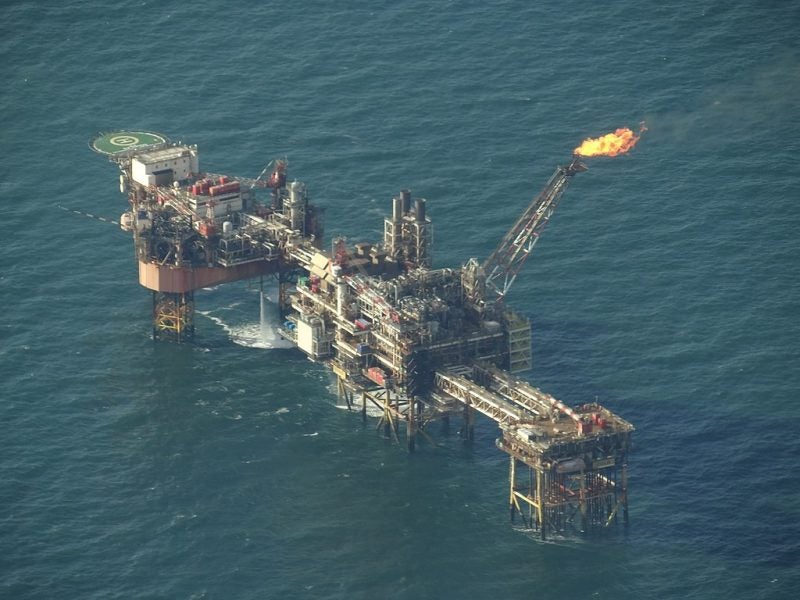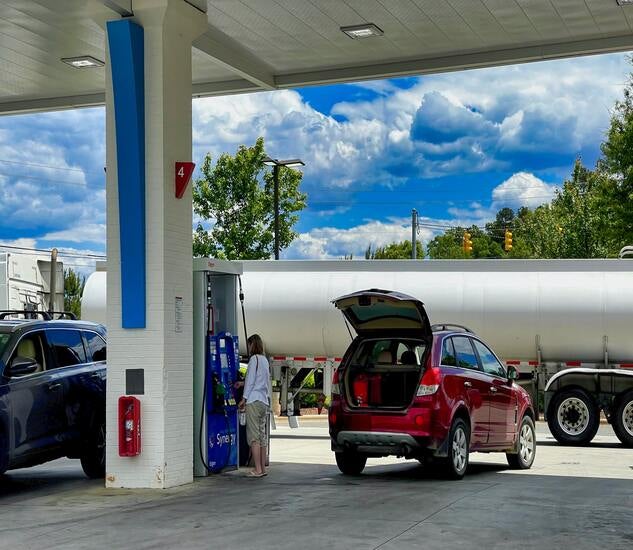
Gareth Wynn, OGUK communications director: improving efficiency and protecting industry
Climate challenge means we all need to live more sustainably and this is a challenge we take on personally and as an industry. We can be a key partner to a successful energy transition which ensures secure energy supply and delivers a diverse energy mix while supporting the advancement of low carbon technologies including carbon capture, usage and storage (CCUS).
Over the past five years CO2 emissions have stabilised with a small annual variation, while production over the same period has increased by 20%. Production efficiency is at the highest level for a decade, at 74%, with a 4% increase in production when compared to 2017. However, CO2 emissions have decreased by 3% from 2017.
How well do you really know your competitors?
Access the most comprehensive Company Profiles on the market, powered by GlobalData. Save hours of research. Gain competitive edge.

Thank you!
Your download email will arrive shortly
Not ready to buy yet? Download a free sample
We are confident about the unique quality of our Company Profiles. However, we want you to make the most beneficial decision for your business, so we offer a free sample that you can download by submitting the below form
By GlobalDataThis means today we are emitting less CO2 per barrel of production than in 2014. Operators are making changes to processes and equipment offshore to continually improve efficiency and performance, and less energy was required per unit of production in 2018. The high proportion of emissions from power generation has been identified as a key area of focus in reducing offshore CO2 emissions. Some incremental improvements have been seen in changes to the operations of turbines and deployment of new technology. OGUK is working with members to share these lessons across industry.
For example, UK offshore oil and gas installations are not connected to the national grid and must produce their own power offshore. This is attributable to 75% of installations’ CO2, and therefore high up the list of activities to decarbonise, yet cables to shore are not currently commercial. Equinor have committed to a NOK5bn ($550m) investment in its 11 turbine, 88MW Hywind Tampen project, which when operational, will meet around 35% of the 5 Snorre and Gullfaks platforms, equivalent to around 200,000 tonnes of CO2 per year.
It’s also useful to look at the work of the Oil and Gas Technology Centre, where there is work going on to develop power from shore, and linking with renewables. New Aberdeen Harbour South is a ‘global eco-port’ being designed with shore to ship power in mind to allow it to tap into cleaner electricity source, and designed for the variety of fuel types that could be required as the industry moves towards cleaner energy.
Our estimates show that by 2050, oil and gas demand will be about a third of what it is today and it’s important we meet as much of that from domestic resources. While electricity generation is easier to switch to renewables, there are energy-intensive industries and processes which will take more time to find low carbon alternatives. This industry can be a key partner to finding the solutions to deliver a successful energy transition and supporting sectors such as transport and manufacturing to develop and utilise low carbon technologies.
OGUK is working with its members to develop routes to meet our commitment to the UK goal of net-zero greenhouse gas emissions by 2050 while maintaining UK energy sovereignty.
We are not competing with renewables; we are all part of the answer and are all needed as part of a diversified, lower carbon energy mix. Indeed, we compete with non-indigenous energies that pay no taxes, support no jobs and often have a greater carbon footprint than our own home-produced energy.
Kathy Mulvey, UCS academic: insufficient steps and insincere attempts
The website comes across more as an advertisement for pumping out more than one million barrels of oil and gas per day in 2035 than a serious commitment to swift and deep reductions in global warming emissions from fossil fuel products and operations. A real roadmap would show how the actions lead to the stated goals and include verifiable quantitative midterm targets, reporting mechanisms, and clear accountability for delivering on these commitments.
UCS’s assessment of major investor-owned oil and gas companies’ climate-related positions and actions for our Climate Accountability Scorecard found that, on the whole, what they are doing remains insufficient to prevent the worst effects of climate change. No major fossil energy company has committed to achieving net-zero global warming emissions from its operations and from the use of its products by mid-century, or to conduct all activities in ways that are verifiably consistent with this commitment.
To avoid the worst impacts of climate change, the world needs to achieve net-zero carbon emissions by mid-century; and that will require swift and deep reductions in emissions from the burning of fossil fuels. Innovation and improvements in efficiency that help the UK oil and gas sector reach net zero global warming emissions from its operations and from the use of its products before mid-century are welcome.
But I’d have a lot of questions about employing wind power primarily in ways that facilitate new oil and gas projects and lock in future emissions. And to the extent that emissions reductions depend on technological innovation, there needs to be transparency about who will pay to develop that new technology.
Energy companies can certainly remain profitable in a low-carbon world. Oil and gas companies face physical risks to their own operations and infrastructure due to sea level rise, higher temperatures, and extreme weather events. They also face regulatory risks, market risks, reputational risks, and liability risks as the world transitions to a zero-carbon energy system. Major oil and gas companies in the UK and around the world are responding to a growing demand from mainstream investors that they do a better job disclosing how they plan to act on climate-related risks and opportunities. So at the end of the day, the rewards for climate action are increasingly intertwined with market incentives.




